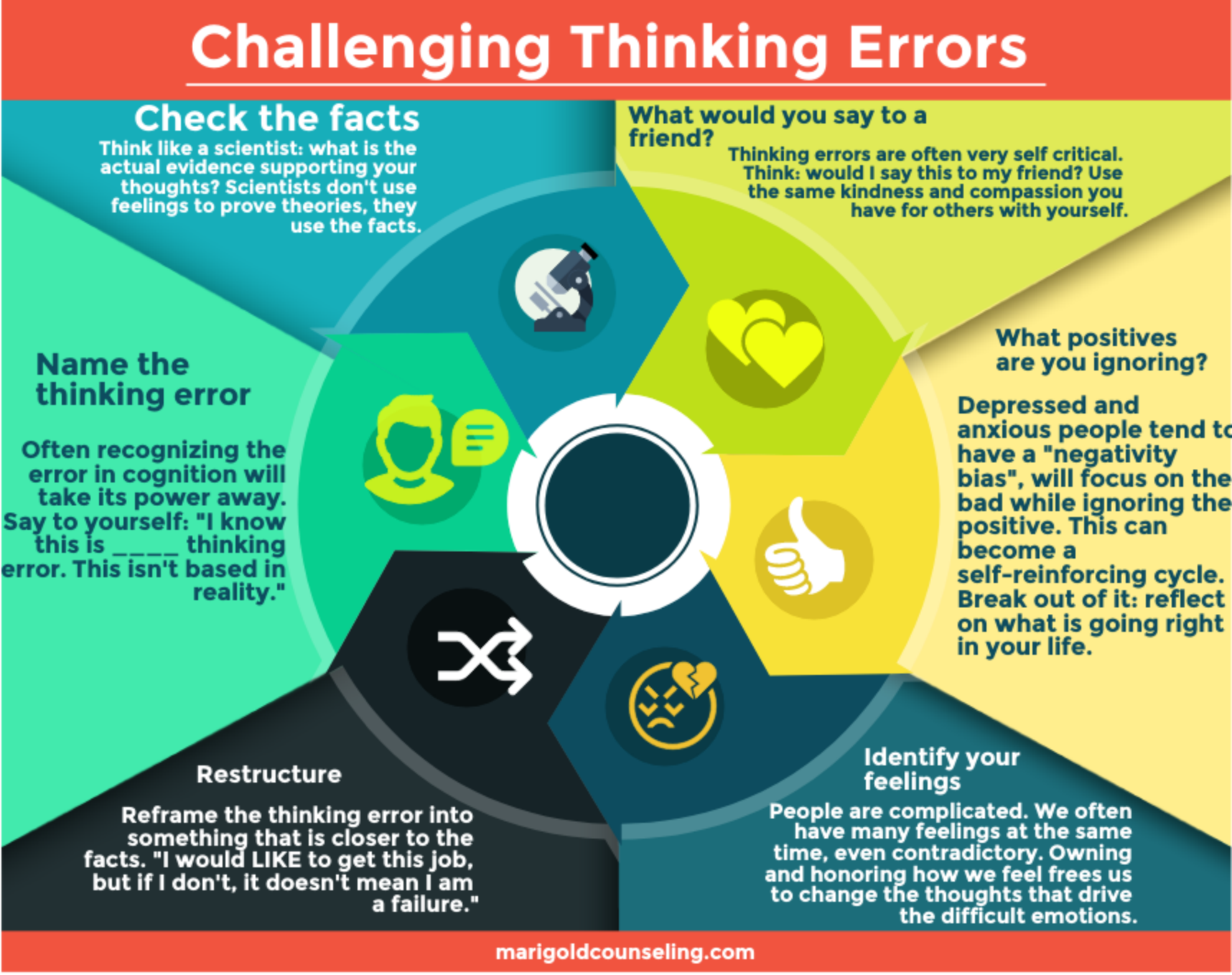How to Challenge Thinking Errors
Building off of last week's post about a few kinds of thinking errors, this week's blog post is about what to do next. Depressed people often think in negative and pessimistic ways, while people struggling with anxiety often over-estimate the likelihood that something bad will happen, and underestimate their ability to handle difficulties. The goal is to keep it all in perspective, and do some reality checks to assess how likely the negative thoughts a person is having is factual.
Become a brain detective and evaluate your thinking:
What facts do I have supporting this belief?
What happened last time I was concerned about this?
Am I jumping to conclusions that are not supported by the evidence?
Are there any things that contradict my thoughts that I might be ignoring?
What’s a different explanation?
Are there any other ways to view this situation?
Is what I believe the only or most logical way to explain what is happening?
Would everyone in a similar situation think this way?
What is the absolute worst thing that could happen, and how bad would that actually be?
What is most likely to happen?
Would it still be so bad in a week/month/year?
What are the facts in this situation, and what are my own feelings and interpretations?
What are the pros (advantages) and cons (disadvantages) of thinking this way?
Use the infographic below to help remind you how to check in when you find yourself using thinking errors, save it to your phone, print it off to keep by your desk.

